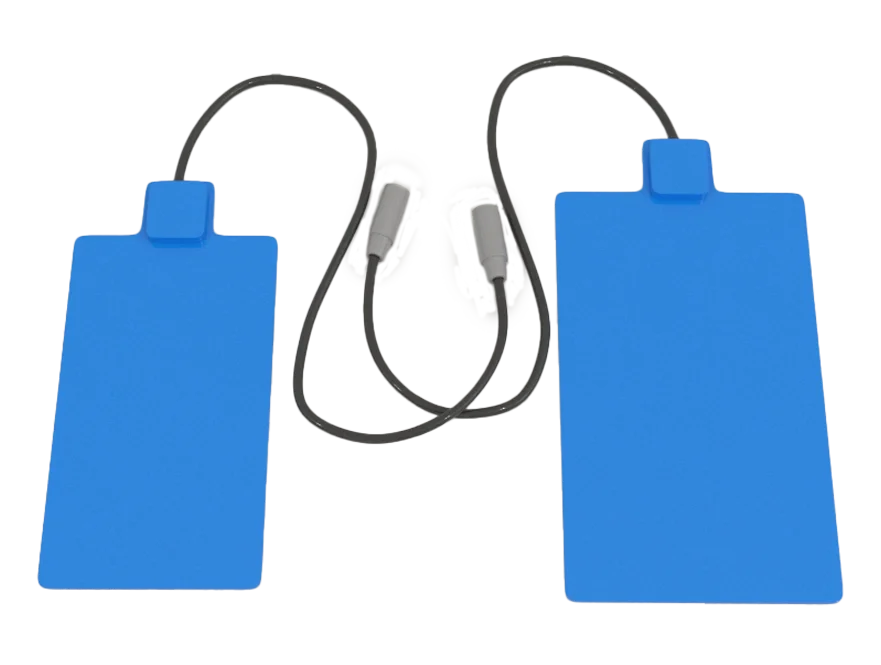Homeothermic
monitoring system
Overview
The Homeothermic Monitoring System ensures precise temperature control for rodents during research. Configurable for various sizes and quantities of animals, it includes options for additional heating pads and thermal sensors. Temperature regulation is crucial to maintain physiological stability and experimental consistency, as rodents are sensitive to temperature fluctuations. Effective thermal control minimizes stress, enhances recovery, and improves research accuracy. With advancements in thermal control practices, this system supports both animal welfare and reliable scientific outcomes.

Homeothermic Information
Homeothermic Device

Homeothermic Monitoring System
Homeothermic accessories
How to Configure Your Thermoregulation Setup
1. Note that to control the temperature, each animal will need a heating pad and a thermal probe.
2. Determine whether you will use the system for a rat, mouse, or a slightly larger animal.
3. Define how many animals you need to work with at the same time (1 or 2). The standard configuration of the Homeothermic Monitoring System is equipped to work with one animal. It includes additional ports to connect one more animal, allowing temperature regulation for up to 2 animals simultaneously.
A) If you only need to control the temperature of one animal, you can choose from the following system options as appropriate:
- Homeothermic Monitoring System _Cage Size
- Homeothermic Monitoring System _Rat Size
- Homeothermic Monitoring System _Mouse Size
B) If you need to control the temperature of 2 animals simultaneously, you will need to choose one of the above options and add an additional heating pad and thermal sensor:
- Homeothermic Monitoring System _Cage Size + 1 heating pad + 1 thermal sensor
- Homeothermic Monitoring System _Rat Size + 1 heating pad + 1 thermal sensor
- Homeothermic Monitoring System _Mouse Size + 1 heating pad + 1 thermal sensor
Why Temperature Control is Essential
Thermoregulation in Rodents
Physiological Aspects of Thermoregulation in Rodents
Rodents, including mice and rats, are homeothermic animals that maintain their core body temperature within a narrow range despite varying external temperatures. They achieve this through a combination of behavioral and physiological mechanisms. Key physiological aspects include:
- Metabolic Rate: Rodents have high metabolic rates, which produce significant internal heat. This is essential for maintaining their body temperature, especially in colder environments.
- Vasomotor Responses: Rodents can regulate blood flow to the skin and extremities. By constricting or dilating blood vessels, they can either retain heat or dissipate excess heat.
- Shivering and Non-shivering Thermogenesis: Shivering generates heat through muscle activity. Non-shivering thermogenesis, primarily occurring in brown adipose tissue, generates heat through metabolic processes.
- Evaporative Cooling: Although less efficient than in some other animals, rodents use evaporative cooling through panting and grooming to reduce body temperature when necessary.
The Significance of Maintaining a Thermoneutral Zone
The thermoneutral zone (TNZ) is the range of ambient temperatures where rodents can maintain their core body temperature without needing to expend extra energy for thermogenesis or cooling. Maintaining rodents within their TNZ is crucial for several reasons:
- Energy Conservation: Within the TNZ, rodents do not need to increase their metabolic rate for temperature regulation, allowing them to conserve energy for growth, reproduction, and other vital functions.
- Physiological Stability: Exposure to temperatures outside the TNZ can induce stress responses, alter metabolic rates, and impact physiological processes such as immune function and hormone regulation. Maintaining a stable temperature within the TNZ ensures the normal functioning of these processes.
- Experimental Consistency: In research, variability in environmental temperature can introduce confounding factors that affect experimental outcomes. By keeping rodents within their TNZ, researchers can minimize these variables, leading to more consistent and reliable data.
- Animal Welfare: Ensuring that rodents are kept within their TNZ improves their overall well-being, reducing stress and discomfort. This is not only a matter of ethical responsibility but also enhances the quality of research by ensuring the animals are in optimal health.
By understanding and implementing effective thermoregulation strategies, researchers can improve the welfare of their rodent subjects and the reliability of their experimental results.
History of Thermal Control in Research
Case Studies and Research Findings
Summaries of Key Studies Highlighting the Importance of Thermal Control
Numerous studies have underscored the critical role of precise thermal control in research involving rodents. Here are summaries of some key studies:
- Hankenson et al. (2018): This study focused on the impact of ambient temperature on the physiology and behavior of laboratory mice. It was found that even slight deviations from the thermoneutral zone could lead to significant stress responses, altered immune function, and changes in metabolic rate. The researchers concluded that maintaining a stable and appropriate temperature is essential for obtaining reliable and reproducible results in biomedical research.
- Schuster & Pang (2018): This research investigated the effects of cold stress on the immune function of mice. The study revealed that mice exposed to lower temperatures showed compromised immune responses, including reduced production of cytokines and altered leukocyte activity. These findings highlighted the necessity of maintaining a controlled temperature environment to prevent confounding variables that could skew experimental data.
- Skoven et al. (2021): This study examined the impact of temperature regulation on the recovery of rodents after surgical procedures. It was demonstrated that rodents maintained within their thermoneutral zone during and after surgery had significantly faster recovery times, lower mortality rates, and fewer postoperative complications compared to those exposed to suboptimal temperatures. The study emphasized the importance of thermal control for enhancing animal welfare and improving the outcomes of surgical experiments.
Real-World Examples of Successful Temperature Regulation
- Behavioral Studies: In behavioral research, precise thermal control has been shown to minimize stress-induced behavioral changes. For example, in studies examining anxiety-like behavior in mice, maintaining animals at a constant temperature within the TNZ resulted in more consistent and interpretable data (Gulinello et al., 2019). Researchers were able to attribute observed behaviors to experimental treatments rather than temperature-induced stress.
- Pharmacological Research: In drug efficacy studies, maintaining rodents at an appropriate temperature is crucial for accurate assessment of drug effects. For instance, a study on the analgesic effects of a new pain medication found that temperature fluctuations significantly impacted the drug’s efficacy (Lu et al., 2019). By using thermal controllers to maintain a stable environment, researchers were able to obtain clear and reliable data on the drug’s performance.
- Genetic Research: In genetic studies involving knockout mice, temperature control has proven essential in distinguishing phenotypic changes due to genetic modifications from those caused by environmental stress (Hankenson et al., 2018).. A study examining the metabolic effects of a specific gene knockout found that temperature variations could mask the true phenotypic expression. Consistent thermal regulation allowed for precise identification of the gene’s role in metabolic processes.
- Surgical and Anesthesia Procedures: Successful surgical outcomes in rodent models heavily depend on maintaining optimal body temperature. For example, a research project on the effects of hypothermia during anesthesia demonstrated that using thermal controllers to keep rodents warm during procedures significantly reduced anesthesia recovery times and postoperative complications. This practice has since become a standard protocol in many research facilities, ensuring better animal care and more reliable experimental outcomes Skoven et al. (2021).
References
- ulinello, M., Mitchell, H. A., Chang, Q., Timothy O’Brien, W., Zhou, Z., Abel, T., Wang, L., Corbin, J. G., Veeraragavan, S., Samaco, R. C., Andrews, N. A., Fagiolini, M., Cole, T. B., Burbacher, T. M., & Crawley, J. N. (2019). Rigor and reproducibility in rodent behavioral research. Neurobiology of learning and memory, 165, 106780.
- Lu, J., Wang, W., Liu, H., Liu, H., & Wu, H. (2019). Cisplatin induces calcium ion accumulation and hearing loss by causing functional alterations in calcium channels and exocytosis. American journal of translational research, 11(11), 6877.
- Hankenson, F. C., Marx, J. O., Gordon, C. J., & David, J. M. (2018). Effects of rodent thermoregulation on animal models in the research environment. Comparative medicine, 68(6), 425-438.
- Skoven, C. S., Tomasevic, L., Kvitsiani, D., Pakkenberg, B., Dyrby, T. B., & Siebner, H. R. (2021). Profiling the transcallosal response of rat motor cortex evoked by contralateral optogenetic stimulation of glutamatergic cortical neurons. bioRxiv.
- Schuster, C. J., & Pang, D. S. J. (2018). Forced-air pre-warming prevents peri-anaesthetic hypothermia and shortens recovery in adult rats. Laboratory animals, 52(2), 142-151.


